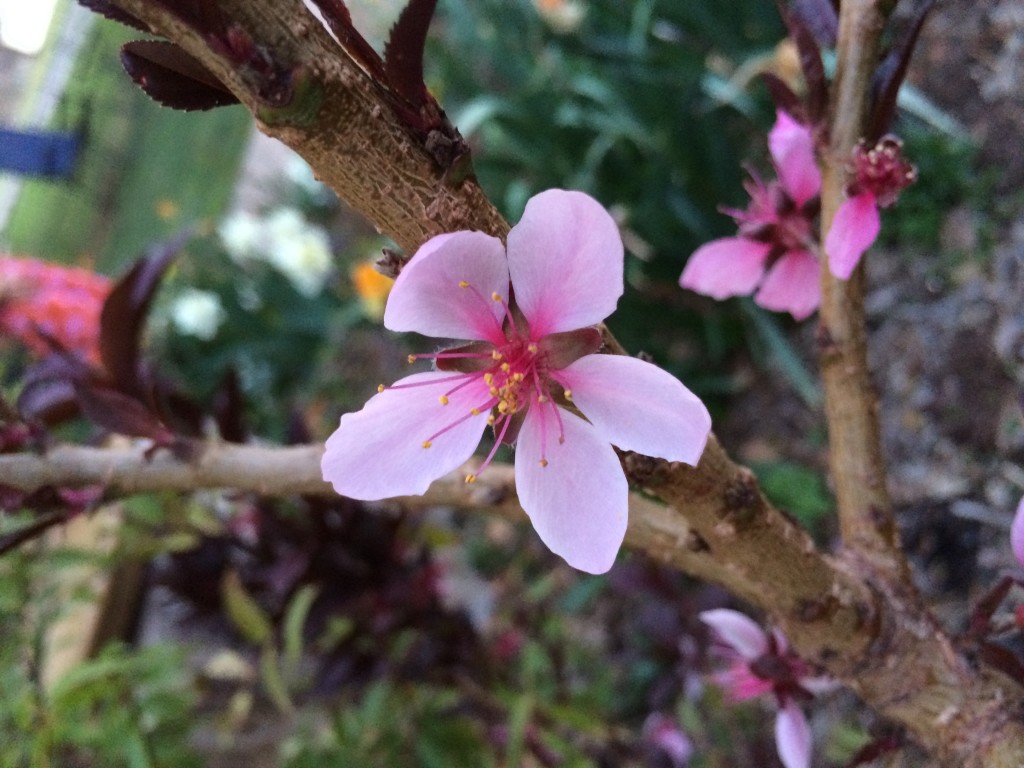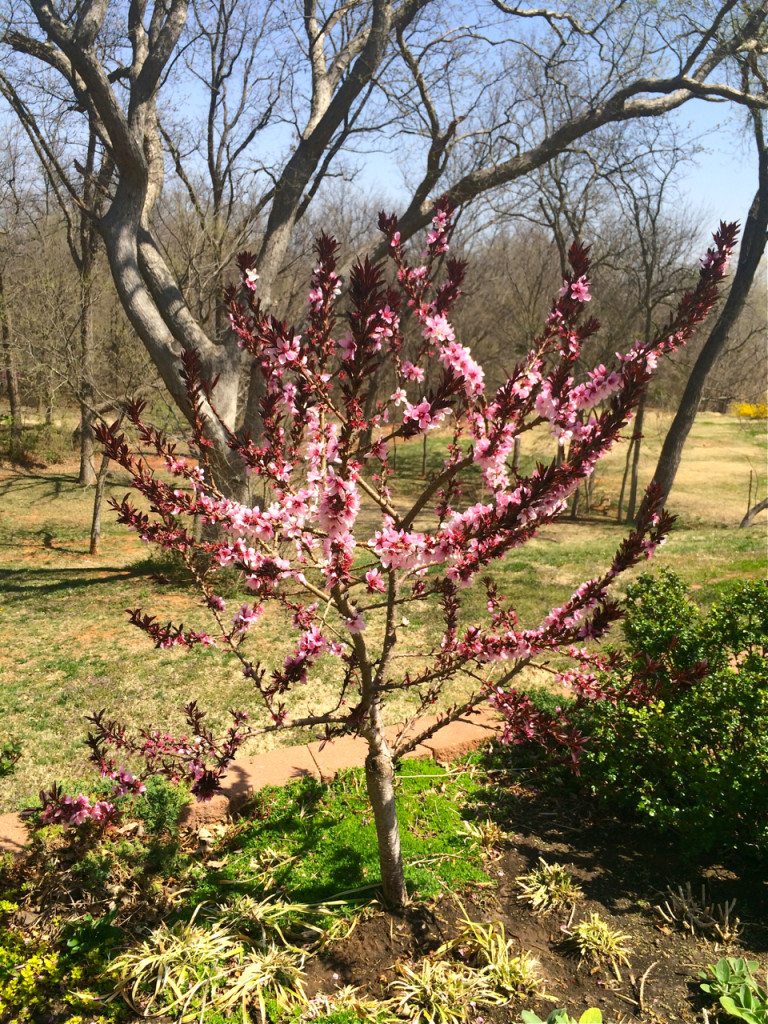I’ve got another article in the Oklahoma Native Plant Society’s newsletter. This one is on native edible landscaping: http://www.oknativeplants.org/Gaillardia/Summer15.pdf
Category: edible landscaping
Got Spring Weeds? Why Not Eat Them?
It’s springtime and as the soil and air temperatures begin to warm many opportunist plants get a jump on things and become “weeds” in disturbed places. Though they may seem to be a nuisance upon closer inspection they provide many benefits to wildlife and man. So before you get out your weed eater, garden gloves or, god forbid, your herbicide of choice, consider eating, appreciating and using these weeds. The following is a brief introduction to some of the more common spring weeds and their uses.
Henbit (Lamium amplexicaule)– This ubiquitous flowering spring weed is such a pan global migrant that it’s exact place of origin is not known. It is thought to have originated in the Mediterranean and it has long been naturalized in the U.S. Like many such weeds it thrives mainly in places of human disturbance so it’s not much of a threat to healthy native vegetation. As weeds go, this one provides many benefits, so it is worth considering it’s values. First to consider are the lovely blossoms which can paint a whole field bright magenta in Spring. I have even observed the color from a plane! Upon closer inspection the flower has a beautiful orchid like appearance. These lovely little flowers provide an early nectar and pollen source for bees and pollinators. Secondly the whole plant is edible! It can be eaten raw or cooked and has a somewhat mild flavor similar to many common greens (lettuce and kale come to mind). It can be good in salads, soups, wraps or even green smoothies. It has a ton of vitamins and as an anti-rheumatic herbal solution.
Dead Nettle (Lamium purpureum) – Dead Nettle is a very similar European relative of henbit. They can often be found growing together and they provide many of the same benefits. The best way to differentiate between the two is that Dead Nettle has more triangular shaped leaves and Henbit’s are more heart shaped. Dead Nettle also tends to have dark purple leaf coloration toward the top of the plant. Eat and prepare in the same way you would Henbit
Chickweed (stellaria media) – Another common lawn weed that tastes good and is good for you. It can be eaten raw and it has the texture of corn silk, it makes a great addition to salads, and when cooked it kind of tastes like spinach. Since chickweed is stringy it is often best to chop it up. Chickweed does contain small amounts of saponins so it is best eaten moderately.
Dandelion (Taraxacum officinale) – Another pan global opportunist, Dandelion is a staple of springtime and can be a staple of the everyday diet. Dandelion is another one that can be eaten raw or cooked. They are a little bitter so picking the smaller leaves can help make it a little more palatable. Blanching the leaves will also help reduce bitterness. Dandelion leaves can be wilted or steamed and the flowers are edible too. The flowers have a fairly sweet taste and crunchy texture which goes well in salads. They can be used to make dandelion wine as well. If that was not enough, the roots can be dug up and used as a substitute for coffee. The whole plant also has medicinal benefits, in particular known to detoxify the liver. In Europe, Dandelions are often grown as a garden green and numerous cultivars are available.
These are only a few of the many plants available for foraging so do some research and find out what plants are in the neighborhood. When picking and consuming edible weeds it is important to be very cautious because some plants look like others (do your research carefully!!). As a word of caution it is best to eat wild foods in moderation, especially when beginning. These plants have very concentrated nutrients compared to their cultivated counterparts so it can take a while for your body to adjust to eating them. If any area has been subjected to chemicals of any sort then it is best to avoid eating anything taken from that area. Happy hunting and Bon Appétit!!
Ps. If you’ve eaten your fill of edible weeds and still have too many, give us a call for some garden maintenance.
For more information on foraging Oklahoma edibles of all kinds visit:
Oklahoma Wildcrafting
more general information and good photos for ID can be found here:
Eat The Weeds
Sweet Potatoes Not Lawns
This year we were excited to try out a two crop rotation in our “Ag lawn” area at the Pi House. When we took over the project the area had been an artificial turf lawn and before that it had been a standard non irrigated “lawn” of mainly Bermuda grass and the typical weeds found in poorly maintained lawns. Our idea was to push the idea of “food not lawns” further than the standard veggies etc. into the production of real calorie producing food crops that could also provide some ornamental value. We wanted to try something bold that could challenge notions about the real potential of turning a lawn, which is an essentially useless space, into a productive mini farm space that can actually provide some of level of self sufficiency for residents. We also wanted to bring elements of Oklahoma’s agrarian landscape and past into the urban setting. In a modern take on a share cropping system, the Eco crew and myself invested some of our labor time into the crop and in return we split up the harvest.
Starting late last Fall after our initial landscape installation we were able to squeeze a sowing of winter wheat in and despite the late planting we had a really healthy crop. Back in June we harvested the wheat crop and we were pleased with our result of 40 lbs from our fairly small ~700 sq. foot area. This should be enough wheat to make at least one loaf of bread per week for a year! I’ll be posting more about the wheat harvest and processing in the near future. Directly after our wheat harvest we planted 500 sweet potato slips of 8 different varieties which took a couple of hours. The little bit of wheat straw left on the area was a great mulch and it by mid July there was an attractive looking sea of sweet potatoes. As the summer progressed the plants got huge and created a thick mass of colorful vines that threatened to engulf sidewalks, beds and the home but with a little gentle training stayed relatively in their area. In Oklahoma we are blessed with a long warm growing season so we were able to wait until early November to harvest. Harvesting sweet potatoes is equal parts digging for buried treasure and working on a chain gang but it only took 3 of us roughly 4 hours to harvest our crop. Our efforts were well rewarded with a 240 lb harvest! All in all it was a productive first season for the “ag lawn”. We have now planted the winter wheat and we’re planning a similar rotation for this year although we may incorporate some dry beans. The possibilities are really endless as we could go with a summer grain ie amaranth, maize, millet or other summer crops like sunflowers, peanuts, lentils etc. What kind of mini farm would you like to replace your energy intensive non productive lawn with?
- Planting slips mid June
- Looking over the work
- 500 slips planted in a few hours
- 1 month later in July
- 2 months later in August
- 3 months later in September
- Cutting Back tops with Scythe. November
- Harvesting with broadfork
- Harvesting sweet potatoes makes you happy
- A rare smile
- Buried treasure
- Harvest weigh in: 240lbs!
- Visions of sweet potato paradise
City of Norman Landscape Award for Pi House
One of our flagship projects ,the Pi House, has received City of Norman Water’s Worth It™ Landscape Award. The city presents the award every month “to a resident of Norman for creative and attractive landscape maintenance and appearance, while demonstrating wise water use. Conservation techniques and native or drought tolerant vegetation are greatly encouraged”. We have made every effort to make this site as drought tolerant and eco friendly as possible. We designed and installed the irrigation system which is mostly drip based and uses a rain/freeze sensor and we have also selected plantings that need very little of the irrigation water. Our main design mandate with this project was that all plantings should be either native, water-wise or edible. It’s nice to be recognized by the City for this project and the award itself is a really cool idea. I hope it will encourage more people to consider alternatives to the landscape status quo and to conserve our precious water resources. I’m also hoping that the city won’t be able to complain about our Wheat/Sweet Potato rotation Ag lawn since they’re giving us an award! I’ll be posting more about this project as time permits (thus far I’ve only covered the interesting little patio design.)

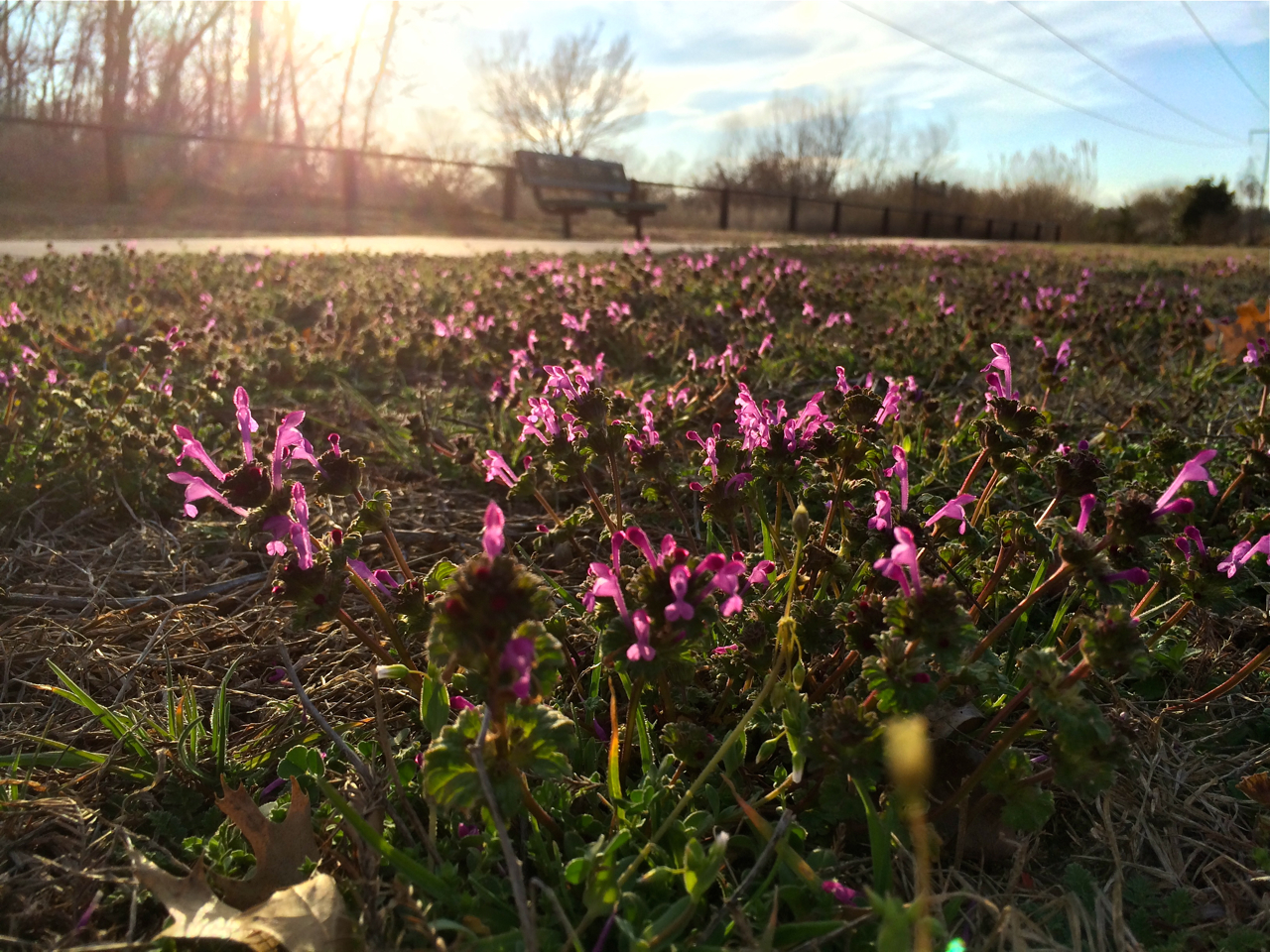

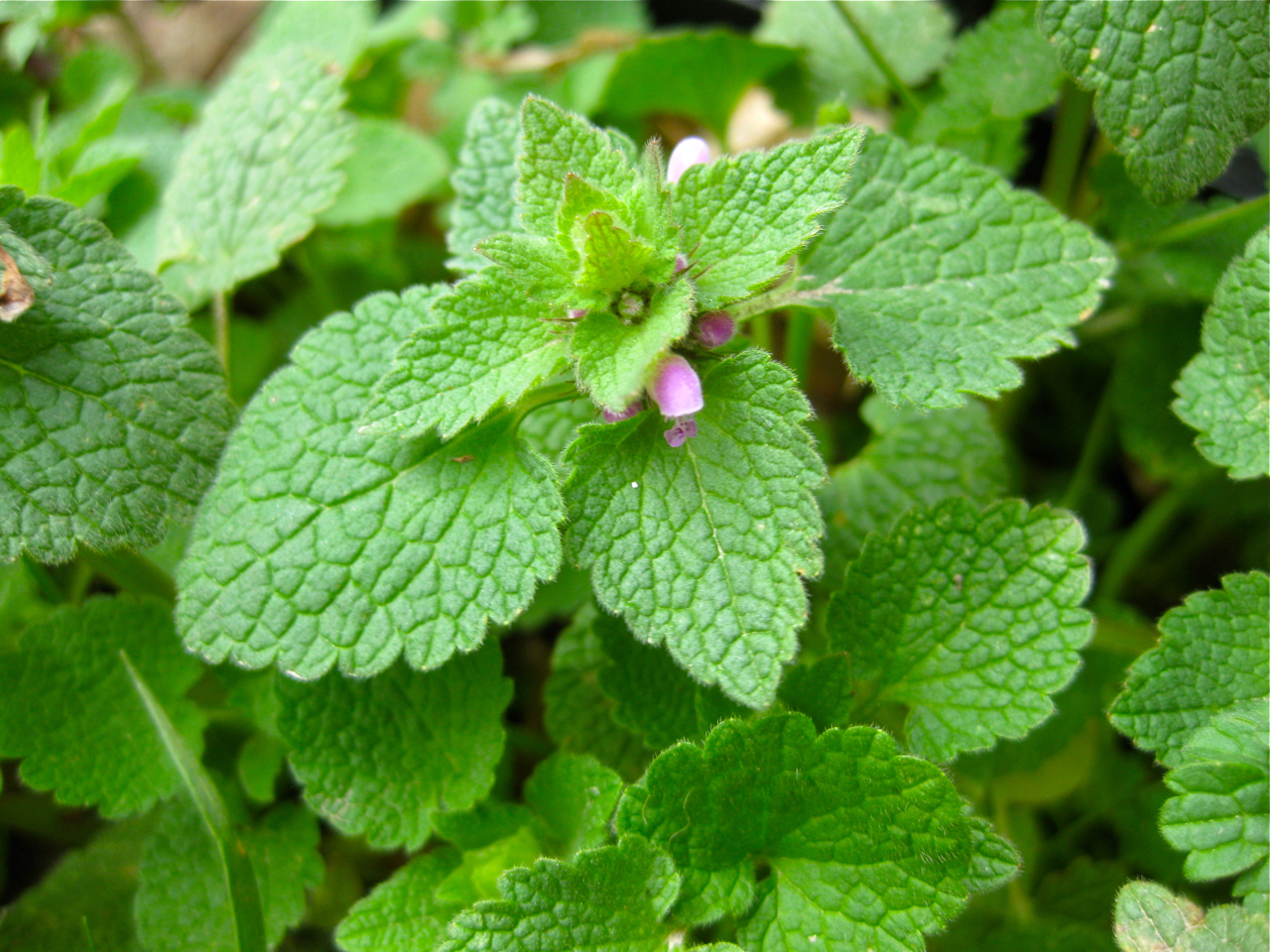


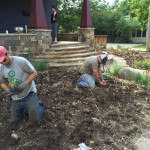
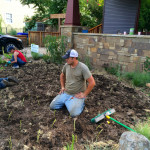
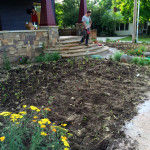
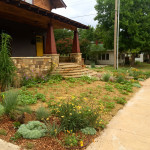

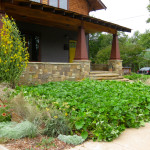
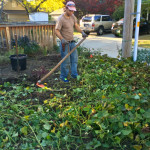
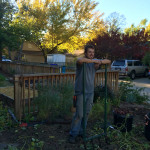
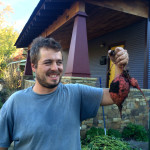

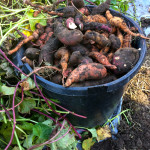

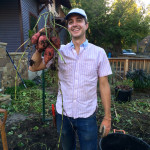
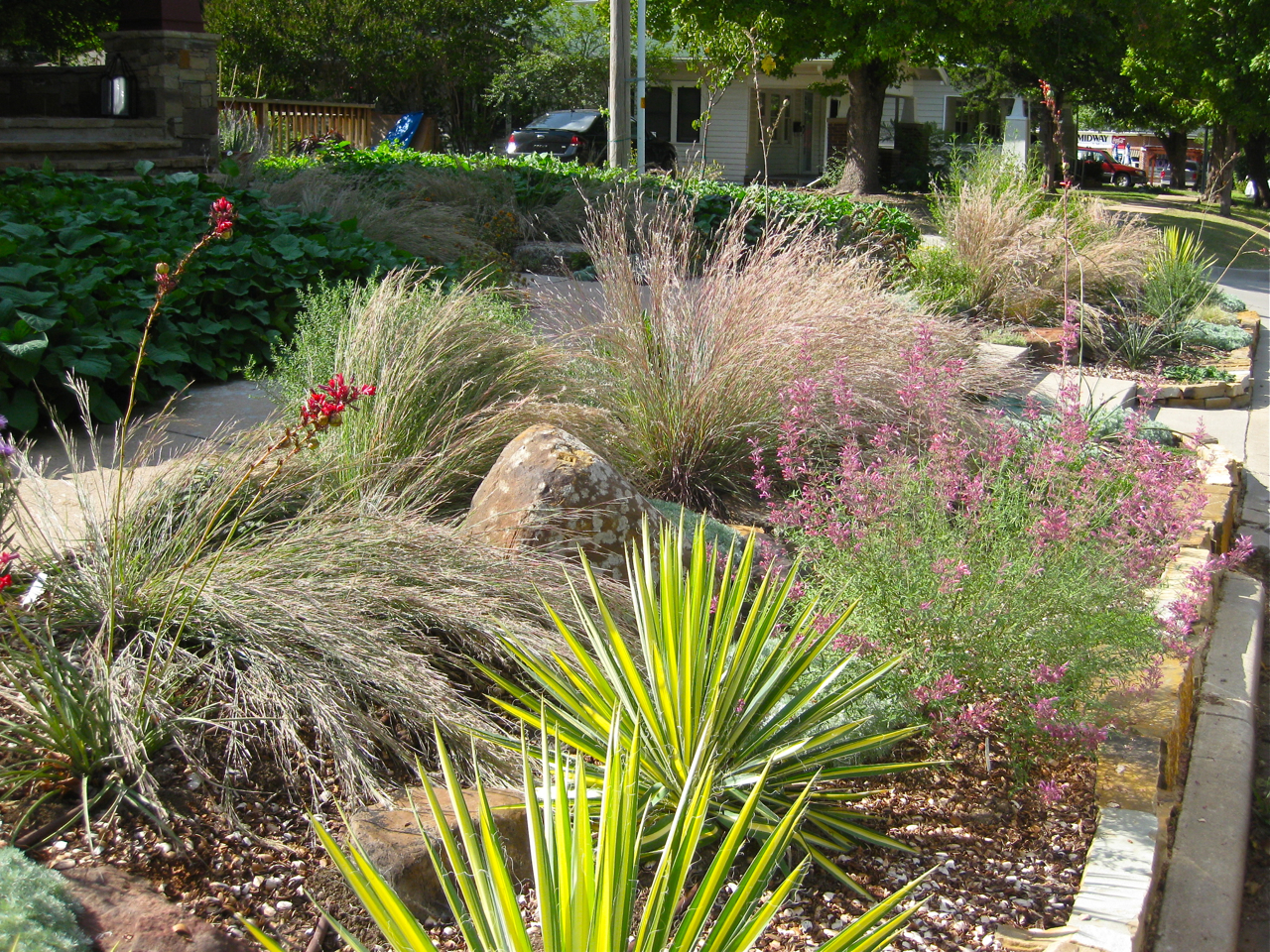
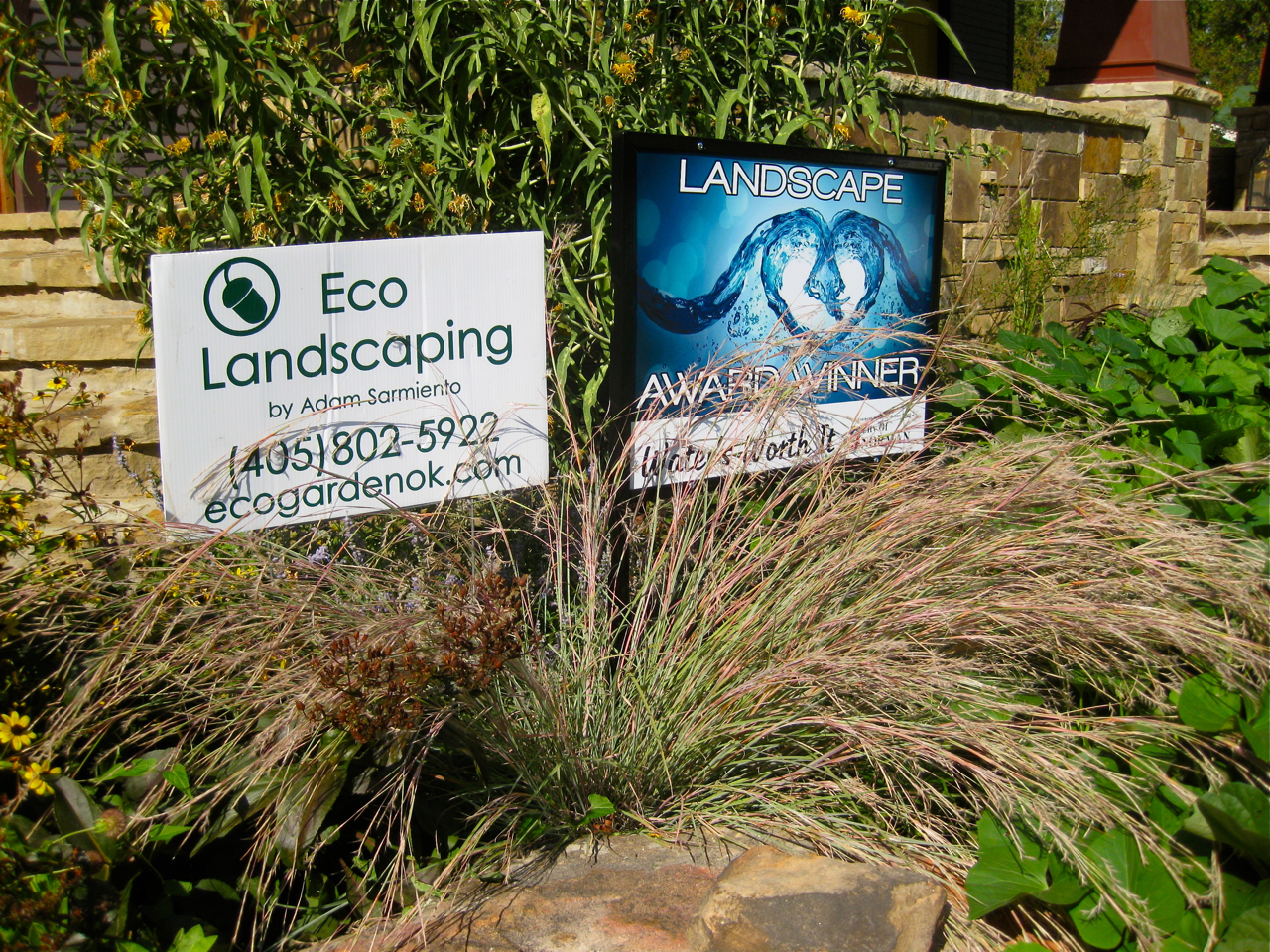
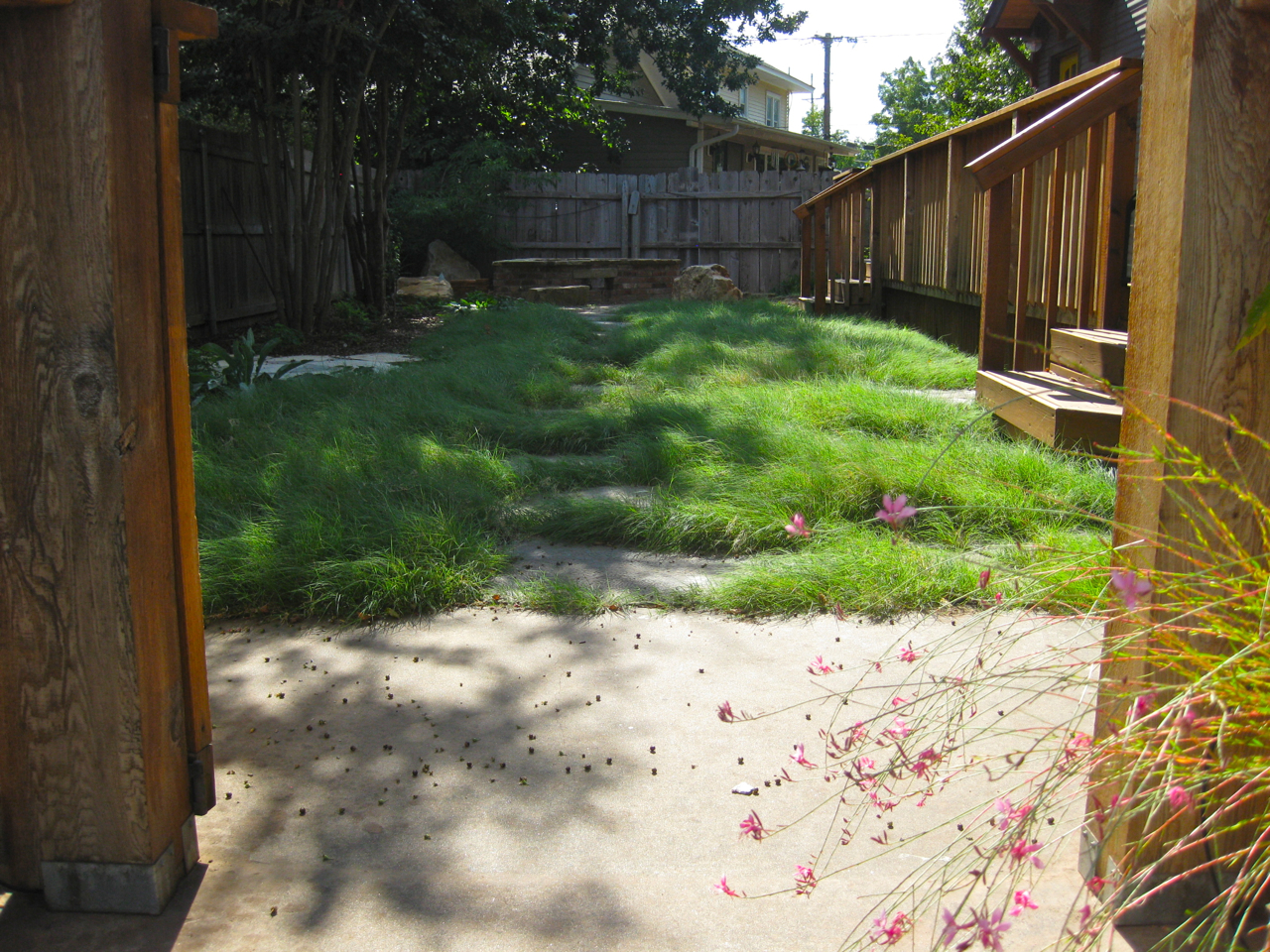 Buffalo Grass lawn
Buffalo Grass lawn


